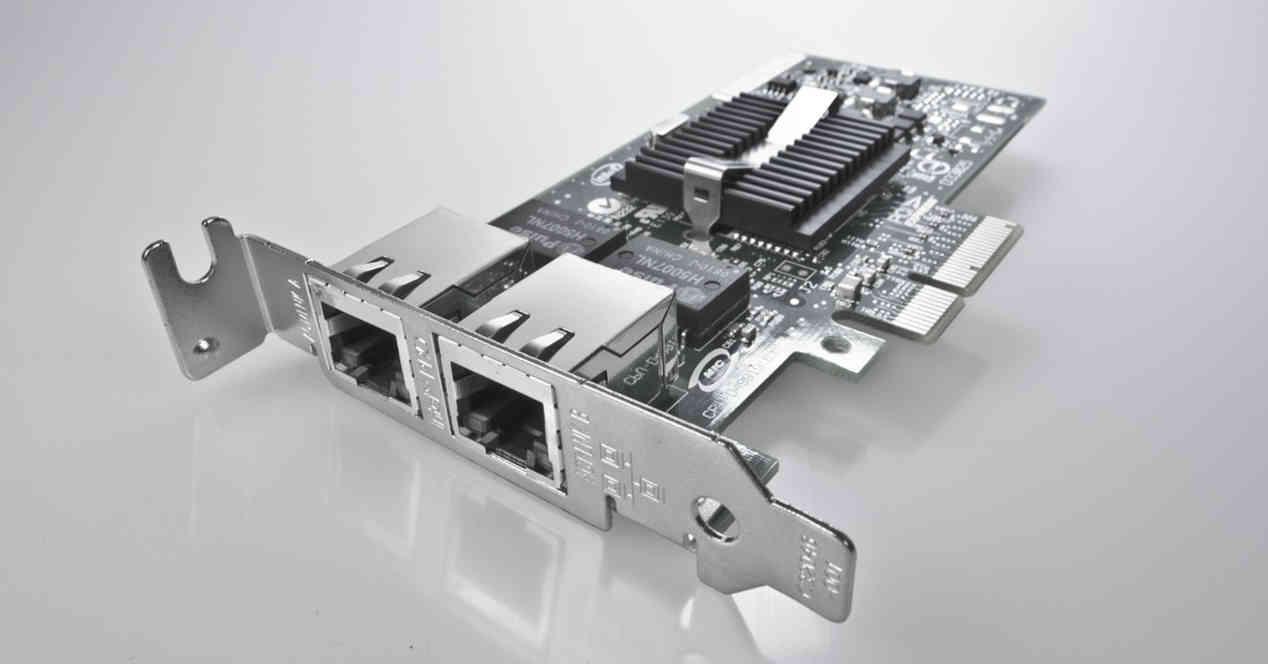Integrated network cards or integrated network controllers are a fundamental part of today’s PCs, because without them it would not be possible for us to connect to the network of networks or to other computers. But what has been its evolution?
What are Integrated Network Cards?
An integrated network controller or NIC is nothing more than a processor responsible for communicating two computers with each other over a network. Since communicating information over long distances does not use the methods used internally in hardware, a part is needed to convert electrical signals into signals that propagate through a different medium.
This requires that each of the computers that communicate with each other have the integrated network card to communicate with each other. In the event that we have several computers within the same network that need to communicate with each other and if we have several computers, a central router is needed which is responsible for carrying out the communication and the corresponding network requests between the different connected computers. to said network. .
Networks on the first PCs
The first computers on the market were not designed to be able to operate in a corporate network, since this was reserved for minicomputers located in the various companies where each user had a terminal. In reality, in these environments, there was no network, but a mainframe whose access and processing time were shared by a series of users, who were few in number.
However. one of these early computers, the Apple II, quickly required the communication of information in an office environment. This was all thanks to the success of the first spreadsheet software, VisiCalc, but back in the day, file sharing in a work environment was about moving storage drives from one user to another. Things did not improve with the launch of the IBM 5150, because for IBM the most lucrative market was the enterprise market and its mini-computing division gave them big capital, so the IBM 5150 did not. also not the ability to connect through a network with other serial computers.
For years, the ability to connect to a network on a personal computer was an option that required a separately sold network card. Because it was something that home users did not need and so did businesses, it motivated the high prices of network cards in a personal computer.
Network cards reach home PC
The first generation of computers capable of connecting to the Internet did so through modems, a piece of hardware that was directly connected to the telephone network to connect to the network. Its biggest limit? It only allowed accesses of a few kilobytes per second and although year after year they grew in speed in a short period of time, they were limited in capacity.
It is with the arrival of what is called broadband internet and therefore with the passage to much higher speeds that modems have gradually disappeared to be replaced by routers that required the use of a connection. ethernet on a PC to be able to use them. At the same time, years of PC integration and evolution have made it possible to integrate previously extremely expensive network cards into the motherboards of desktops and laptops.
Today, the capabilities of the network card are built into the chipset of our computer, but the evolution of network cards has gone beyond Internet access and they have become a fundamental piece in the face of the evolution of the hardware, not only to connect. several computers together, but for creation both within the PC and even within an APU or SoC.
Evolution of integrated network cards
Network adapters have evolved incrementally over time, increasing the capacity of network processes that they can handle at the same time. Most network cards mounted on PCs have limited capacity, so the processor must handle these processes. Unfortunately, in order to keep costs down and the fact is one part that is often overlooked when reviewing specifications, many PCs come with this network card.
The second type, however, has the ability to reduce the load on the processor when handling the number of requests made by the PC. These network cards are generally found integrated in advanced motherboards and therefore high-end. Not only do they free up the CPU, but their communication is much smoother. Of course, they are not programmable and therefore it is not possible to use their ability to move data more efficiently in different situations.
The third and most advanced type are SmartNICs and they will be essential for the future, not only do they have more processing capacity than any other type of NIC. But they also serve to speed up the movement of data between CPUs and GPUs in supercomputers used for data centers where the amount of network processes is much higher. The idea in this case is to use SmartNICs and the fact that they are programmable to manage data movements more efficiently. Today, SmartNICs are implemented through the use of SoCs, specialized ASICS such as NVIDIA DPUs based on Bluefield Mellanox technology or using FPGAs.
What does a “network card” do to my processor?
In the future, the intercommunication of the various components of an APU or SoC will be done via a SmartNIC integrated into the chip itself. This concept, called NoC, consists of converting each of the classic elements of an SoC into an element within a network that communicates with the central SmartNIC for communication between them and with the memory.
Regarding its roadmaps, NVIDIA showed us GPUs with a SmartNIC integrated inside and in the case of AMD, the takeover of Xilinx aims to integrate SmartNICs based on Xilinx FPGAs within AMD processors. . It should be kept in mind that as the number of CPU and GPU cores increases more and more, the conventional structures for communicating the elements of an SoC become less and less efficient.
Table of Contents














